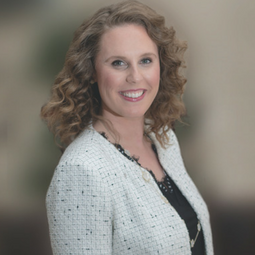Wherefore, wearables?
Wearable health technology is all the buzz in the consumer market with tools such as Fitbit and Apple Watch. Acute care settings are using wearables to reduce inpatient costs and monitor patients from home. In senior care settings, however, wearables have so far seen use primarily as security devices such as electronic ID bracelets and wander management devices or alert pendants/bracelets. Now some startup companies are aiming straight for the senior demographic, developing lightweight sensors with an eye on monitoring everything from vital signs to sleep patterns and gait.
Wearable technology is definitely moving beyond the consumer market and into clinical settings. A recent report by the Consumer Technology Association predicts the United States could reach a “critical mass” of physicians using patient-generated data from devices such as wearables by 2020. A white paper from CDW Healthcare noted that 17 percent of Americans over age 65 use wearables to monitor vital signs and track fitness, not far below the 20 percent of Americans under age 65. The report also noted that seniors’ adoption of wearables is increasing more than five times faster than that of the general population.
The rate of adoption of technologies such as wearables depends on the business model of the care organization, notes Laurie Orlov, the founder of Aging in Place Technology Watch, a market research firm focused on technologies and services that enable boomers and seniors to remain longer in their home of choice. “For instance, skilled nursing facilities might be interested in adopting a technology if it keeps a person from having to return to a more expensive form of care at the hospital,” she says.
Here are brief profiles of six wearable technology solutions already in use or with potential for the senior care market.
EarlySense Inc.
Founded in Israel with U.S. headquarters in Waltham, Massachusetts, EarlySense Inc. developed a contact-free bed sensor and advanced algorithms to monitor and analyze cardiac, respiratory, sleep and motion parameters. Although its solution was initially designed for the hospital setting, last year the company launched a product called InSight for use in rehabilitation and skilled nursing facilities.
Tim O’Malley, president of EarlySense, calls InSight a simplified and lower-priced version of their hospital product. “When we would introduce our hospital-based product, which is a traditional-looking patient monitor, into skilled nursing and rehab facilities, we would hear that it looks and feels too much like a hospital product.” he says. “Their needs are different. They wanted a simpler interface without losing the capabilities.” InSight shrinks the monitor to the footprint of a smartphone, but with two or three times the depth. Providers plug it into the wall, and have the same processing and communication capability as they would with the hospital device.
The company notes that in clinical studies, EarlySense’s solution has been shown to assist clinicians in early detection of patient deterioration and in identifying and preventing potential adverse events such as patient falls and pressure ulcers.
“The gap you see with a lot of wearables is that they don’t have the clinical utility,” O’Malley says. “They don’t have the accuracy. If you have a sick patient, a wearable has to be able to cover the spectrum of heart and respiratory rates, and many wearables don’t have the level of accuracy built in. We come from the medical world and are moving out from there into the skilled nursing and rehab space. Eventually we are going to be offering the same types of thing in the home.”
Leaf Healthcare
When Barrett Larson, MD, was in medical school and helping with rounds in the hospital, he was shocked by how much damage pressure ulcers caused. “Here we were with all this 21st century technology around us but someone could still suffer from something like this,” he recalls. “It seemed absolutely tragic. It really stuck with me. I felt compelled to do something about it.”
In 2010 Larson co-founded Pleasanton, California-based Leaf Healthcare, which includes a wearable, wireless, disposable sensor that providers apply to a resident’s skin like they would an EKG electrode. It is waterproof and lasts three weeks. It turns on and automatically detects that it is attached to a person and starts analyzing their movement and activity. “Under the hood, it is doing computation and analysis and sending a simple mobility report to the nurse,” Larson explains. The first application has been for personalized pressure injury prevention—analyzing which residents need to be turned, how often they need to be turned, and by how much. “It helps deliver ‘prescription-strength’ mobility,” he adds, meaning just the right dose of mobility for that patient. “Based on a patient’s risk profile, it can dial in a specific turning protocol. That way, patients can be turned as often as necessary but not more often than necessary, so you can work smarter, not harder.”
Although Leaf’s initial target market was acute care hospitals, Larson acknowledges there is a huge need in nursing homes. “Nursing homes are littered with pressure ulcers,” he says. “We have started to go after that market.” Leaf is currently taking part in a National Institutes of Health-sponsored research project involving nine nursing homes.
Larson is convinced that it is impossible to coordinate care with respect to mobility without technology tools like this. “You are flying blind if you don’t have this type of instrument, so I think we are going to look back in the next few years and think about the ways we were trying to coordinate these mobility protocols and laugh at ourselves for fumbling around trying to get these patients moving with no instrument panel and no gauges,” he says. “It is crazy. It is analogous to taking care of a patient in the intensive care unit with no vital signs. It is exactly the same.”
Neurometrix
Market differentiators to look for:
|
Neurometrix was founded in 1996 as a spinoff from the Harvard-MIT Division of Health Sciences and Technology by scientists working on diagnostic testing for nerve diseases and conditions such as diabetic neuropathy, carpel tunnel syndrome and sciatica. “We took that expertise and developed a technology to treat chronic pain without drugs,” says Frank McGillin, senior vice president and chief commercial officer. The company received FDA clearance to market the solution over the counter under the name Quell. It uses high-frequency electrical stimulation to trigger a response in the brain, releasing naturally occurring pain blockers.
Waltham, Massachusetts-based Neurometrix is now partnering with healthcare professionals, pain management clinics and other providers who treat chronic pain patients and are seeking alternatives to prescription opioids.
Research conducted in 2010 at Harvard Medical School demonstrated that seniors using short-acting opioids have a seven-fold increase in the risk of falls. “So there is a downside to medication,” McGillin says. Quell also offers an app that calibrates or personalizes the dosage of the neuro-stimulator and gives feedback on usage and sleep patterns. “That is meaningful to a chronic pain sufferer, because there is a high correlation between chronic pain levels and sleep issues,” he said. “We track sleep quality and duration and periodic leg movements connected to restless leg syndrome. We track activity and gait, and with gait there is a correlation with chronic pain as well as with risk of falls. We also track pain level to show improvement over time.”
Sensoria Inc.
Redmond, Washington-based Sensoria Inc. started out by developing “smart socks” with three pressure sensors and an app to give real-time feedback to runners on cadence and pace. But the startup also saw an application for seniors and rehabilitation patients with gait impairments. In 2016 the company launched Sensoria Walk, which uses the same smart socks but adds features to assist with pace, cadence and distance in a rehab setting. University-based researchers, hospitals and pharmaceutical companies have been reaching out to Sensoria about doing clinical studies, says Sharlene Sternberg, the company’s marketing manager. Its gait monitoring technology could be valuable in studying or detecting disease states ranging from Parkinson’s disease to multiple sclerosis and Alzheimer’s disease, the company says.
Sensoria also has partners using its software developers’ kit to create new applications for the technology. Solution developers in Maine are working on a product called UpBed, which uses Sensoria’s sensors and core platform to create alerts for patients and caregivers when someone—such as a resident with dementia—is up and walking around. The caregiver places upBed on the resident’s ankle at bedtime, and when the resident begins to wake up, a notification is sent to the caregiver’s phone.
One of Sensoria’s board members is David Armstrong, DPM, MD, PhD, professor of surgery at the University of Arizona and the director of the Southern Arizona Limb Salvage Alliance (SALSA). Armstrong and SALSA are exploring the potential of Sensoria’s technology to reduce diabetic foot ulcers through its ability to alert the wearer when pressure is being applied to the wrong part of the foot or for too long.
VitalConnect
San Jose, California-based VitalConnect has developed a clinical-grade wearable biosensor. Its disposable Band-Aid-size VitalPatch, launched last year, monitors eight different metrics, including heart rate, respiratory rate, skin temperature and body position. Clinical staff can access all information in a consolidated view on a mobile platform. VitalPatch also can be used to track a resident’s progress in between care provider visits, giving providers a continuous view of clinical status.
Bill Brodie, the company’s chief commercial officer, believes it has huge potential in the senior care setting. “When you look at fall detection, most seniors don’t know why they fell,” he says. “With VitalPatch, you can add context. You can go back and look at the moments before they fell and see what their heart rate was doing. Did they just trip? Or did they pass out? That would be a tremendous asset. You can become predictive about it with enough data. If you can see that someone might be at risk of a fall, you can prevent it before it happens.”
“We have hospital systems working with VitalPatch in the in-patient setting, and we also have an engagement with a large payer for its members in a skilled nursing facility setting,” Brodie says, adding that one of the reasons it takes a while to bring this technology to market is it takes time to figure out how to work it into existing clinical work flow.
 Neofect USA
Neofect USA
Neofect, a Korean company with U.S. headquarters in Burlingame, California, is targeting the U.S. market with its smart rehabilitation solutions to help patients with neurological and musculoskeletal injuries. Its RAPAEL Smart Glove is used mainly with rehab for survivors of stroke. Using a Bluetooth sensor, the glove tracks the patient’s motion and creates a customized exercise regime. Its solutions are designed to allow therapy training through games. The games help stimulate the brain to reactivate response processes and relearn skills, says Scott Kim, president of Neofect USA.
The solution’s analytics and customization give patients and caregivers real-time biofeedback on their range of motion. “A therapist can say the patient is better by five degrees over the past few weeks instead of just saying he looks better,” Kim says. “That motivates the patient.” So far, the company has targeted the acute care and rehab hospital space, but the skilled nursing facility market is on its radar, he adds.
I Advance Senior Care is the industry-leading source for practical, in-depth, business-building, and resident care information for owners, executives, administrators, and directors of nursing at assisted living communities, skilled nursing facilities, post-acute facilities, and continuing care retirement communities. The I Advance Senior Care editorial team and industry experts provide market analysis, strategic direction, policy commentary, clinical best-practices, business management, and technology breakthroughs.
I Advance Senior Care is part of the Institute for the Advancement of Senior Care and published by Plain-English Health Care.
Related Articles
Topics: Articles , Executive Leadership , Technology & IT , Wearables


 Neofect USA
Neofect USA








